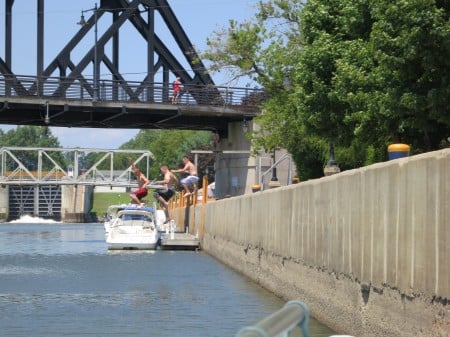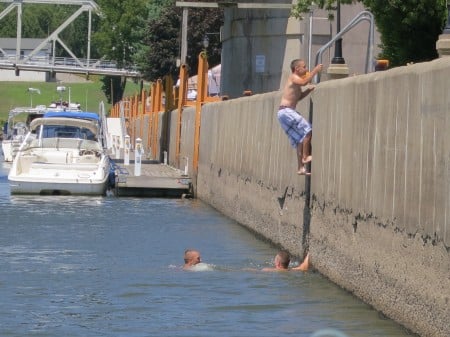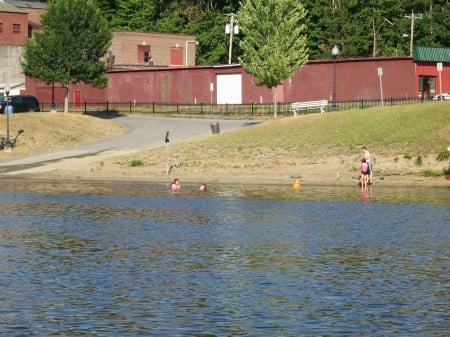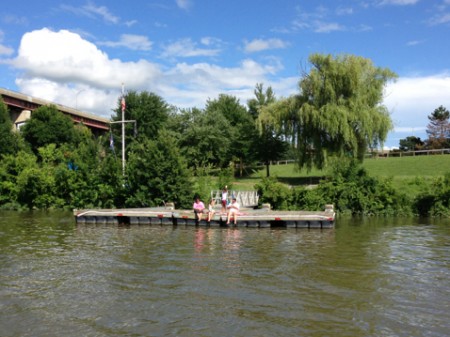Cleaner Waters for NY’s Capital District
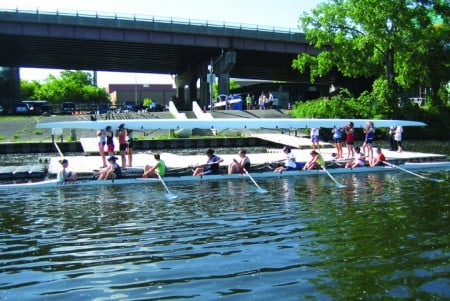
Rowers in the Hudson at the Albany waterfront
View more images on our Flickr site
Planning a Swimmable River for the Capital District
The NY State DEC just released a plan for the Capital District that targets swimmable, fishable water quality for the ‘Albany Pool’ section of the Hudson by 2028, if not sooner. This is very welcome news to this community which has the highest fecal contamination failure rate of all the areas we test in our Hudson River Water Quality Study.
Riverkeeper participated in the development of this plan – the Long Term Control Plan (LTCP) – representing the interests of the Hudson River and the public. We rejected the first draft plan that was released in 2011 for not including meaningful reductions to the combined sewage overflows (CSOs) that dump 1.2 billion gallons of raw sewage and stormwater into the Albany Pool stretch of the Hudson each year. With the support of the public, we lobbied hard for a better plan, and yesterday we were able to celebrate the results of those efforts with the release of the revised and vastly improved final plan that DEC negotiated with the Albany Pool communities.

Rowers in the Hudson at the Albany waterfront
While the Hudson River south of Albany and Rensselaer Counties is classified by NY State as having swimmable water quality, the stretch of the Hudson in those counties is not classified as safe for swimming. This is due in large part to municipal sewage treatment plants that do not disinfect their sewage effluent, failures in aging sewage infrastructure, fecal-contaminated tributaries, and the 1.2 billion gallons of CSO discharges each year.
Despite the persistent pollution, the public in and around NY’s Capital District love their Hudson River waterfront! From the patrol boat we see people swimming, paddling, sailing and rowing in the Albany Pool whenever the weather allows.
The Road Ahead
-
The Long Term Control Plan has a 15 year schedule so the water quality improvements will be incremental.
We anticipate seeing measurable changes to the fecal contamination levels by 2023 when, among other improvements, a new treatment plant that will remove 325 million gallons of CSO discharge each year is scheduled to go online. In total, the plan will reduce CSO discharge volumes by 50%. Of the remaining CSO discharge, 85% will receive partial treatment at a municipal treatment plant.
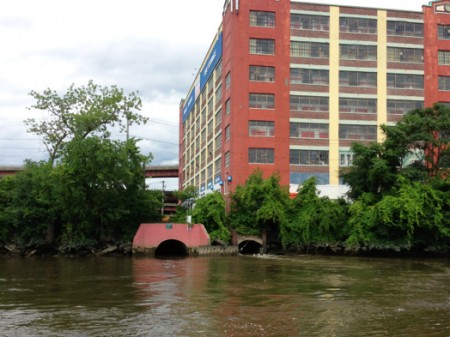
The pink outfall known as the “Big C” discharges 40% of the CSO volume into the Albany Pool.
The final overflow reduction could be even higher as a result of five planned green infrastructure projects slated for Albany, Troy, Watervliet and the Village of Green Island. These projects were welcome additions in the new plan. Green infrastructure has been shown to be a cost-effective approach to reducing stormwater overflows and minimizing wear-and-tear to sewage infrastructure.
Another important revision to the LTCP is the inclusion of a CSO Discharge Notification System which is scheduled to go online later this year. This system, which will be in compliance with the Sewage Pollution Right to Know law, will let the public know when and where CSO discharges are taking place so they can avoid unknowing contact with raw sewage.
By the summer of 2019 weekly water quality monitoring and reporting is scheduled to start at two locations – one at the Albany waterfront and one at the Rensselaer waterfront– during the recreational season. We hope this is the start of a movement towards more monitoring, and public reporting, of fecal contamination throughout the Hudson River.
So Here’s the Plan
We encourage everyone who is interested to review the full plan.
Here is a short summary of its key elements:
- $136 million plan with a 15-year implementation schedule to reduce sewage pollution coming from Albany, Troy, Rensselaer, Cohoes, Watervliet and the Village of Green Island.
- 50% reduction in CSO volume.
- A new ‘satellite’ treatment plant for the largest CSO outfall in the system (the “Big C”) located on Broadway by the U-Haul building in the City of Albany.
- The elimination of some existing CSO outfalls.
- 85% “capture” (partial treatment) of CSO discharges.
- Repairs and upgrades to municipal treatment plants and sewage collection systems, including seasonal (May 1 – October 30) disinfection of treatment plant discharges into the Hudson.
- New facilities to reduce the discharge of “floatables” (i.e. condoms, plastic, and other solid waste) into the water at select large CSO outfalls in Cohoes and Albany.
- Development of a long-term green infrastructure (GI) strategy and implementation of five GI projects.
- CSO discharge public notification.
- Weekly water quality testing and public reporting for fecal contamination at two locations – upstream of Rt. 9/20 bridge crossing I-787 in Albany and upstream of Rensselaer-East Greenbush boundary.
- Plan completion will bring the Albany Pool, Rensselaer and Albany County Sewer Districts into compliance with the federal Clean Water Act and New York State water quality standards.
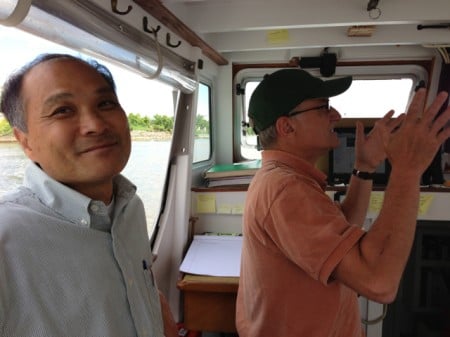
Koon Tang (l) and Joe DiMura (r) from the DEC Division of Water patrolling the Albany Pool with Riverkeeper in 2013
Riverkeeper will continue to participate in the LTCP for Albany as a voice for our waterways and the public. We will continue our water quality monitoring in this region, tracking changes to water quality as the LTCP projects come online.
We strongly encourage residents in this area to keep track of the projects in this plan and support their timely completion so we can all get out and enjoy the water!
